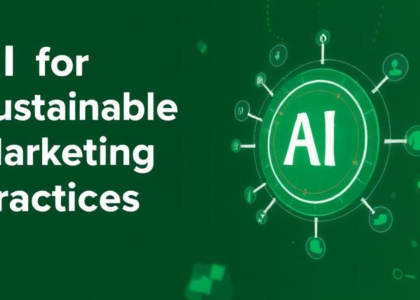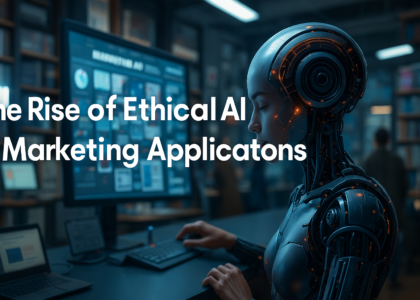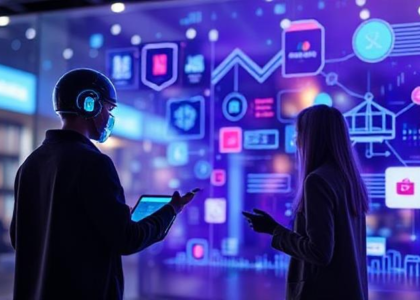
In the age of hyper-digital marketing, it’s tempting to focus entirely on online tactics—social media campaigns, email marketing, search engine ads, and chatbots. But for many businesses, offline channels like events, retail stores, direct mail, and print ads still play a vital role in customer acquisition and brand engagement.
The challenge? These two worlds—offline and online—have historically operated in silos. Data from offline activities often gets lost, underutilized, or disconnected from digital strategies.
Enter Artificial Intelligence (AI)—a powerful bridge that’s finally helping marketers integrate the physical and digital experience into a unified, data-driven journey.
Let’s explore how AI is solving one of marketing’s toughest puzzles: blending offline and online channels to create seamless, smarter experiences that drive real business results.
1. The Disconnected Customer Journey
Traditional marketing struggles with a fragmented view of the customer. A person might:
- Visit your booth at a trade show
- Receive a printed catalog
- Walk into your retail store
- Then click on a Facebook ad weeks later
Without integrated tracking and analysis, these interactions are seen as isolated events. That means missed opportunities for personalization, poor attribution, and a disjointed customer experience.
AI changes the game by connecting the dots—analyzing patterns across touchpoints, enriching offline data, and enabling consistent engagement across every channel.
2. AI-Powered Customer Identity Resolution
One of the most powerful applications of AI in this space is identity resolution—the ability to accurately match customer data across platforms, devices, and even physical locations.
Imagine a prospect who attends your in-person seminar and later visits your website. With AI:
- Facial recognition or check-in apps can log their presence at the event
- Location-based tracking (e.g., from mobile devices or geofencing) connects their offline behavior to a digital profile
- AI matches their activity to an existing CRM record and enriches it with online behavior data
This allows marketers to deliver follow-ups, retargeting ads, or personalized content that reflects the full context of the buyer’s journey.
3. Smart Attribution: From Guesswork to Precision
Attribution has long been a pain point when mixing offline and online marketing. Which touchpoint really drove the conversion?
AI-driven attribution models (like multi-touch or algorithmic attribution) use machine learning to:
- Weigh the influence of offline events (e.g., in-store visit, direct mail response)
- Combine it with online activity (clicks, opens, conversions)
- Determine which channels contributed most effectively to the sale
For example, if someone saw a billboard, scanned a QR code, watched a product video, and then booked a demo—AI can assign weighted credit to each touchpoint, giving marketers better visibility into ROI.
4. AI and Location-Based Marketing
AI-powered geolocation tools enable businesses to trigger digital experiences based on real-world movement. This is particularly valuable for:
- Retail brands
- Event marketers
- Hospitality and travel businesses
With AI analyzing location data, you can:
- Send real-time mobile offers when a user enters a store
- Retarget visitors who were near your trade show booth
- Personalize email campaigns based on regions recently visited
And with privacy-compliant practices, AI can learn from location clusters and behavioral patterns to optimize campaigns at scale without compromising personal data.
5. Offline Data Enrichment with AI
Your offline interactions—sales calls, live events, customer surveys—are treasure troves of insight. But until recently, much of this data remained unstructured and unused.
AI can now extract and structure this offline data through:
- Natural Language Processing (NLP): Transcribe and analyze customer conversations for intent, sentiment, and pain points
- Computer Vision: Analyze foot traffic, engagement, and product interest in physical spaces using CCTV or smart cameras
- Voice AI: Turn call center recordings into searchable, actionable insights
These offline signals can then inform online messaging, offers, content recommendations, and more.
6. AI-Driven Direct Mail Campaigns (Yes, Really)
Direct mail is making a comeback—especially when it’s powered by AI.
AI-enhanced direct mail platforms use customer behavior and online engagement data to:
- Automatically trigger physical mail based on digital activity (e.g., abandon cart)
- Personalize content and product recommendations
- Optimize send times and formats for each customer segment
For instance, a SaaS company might follow up a cold email with a printed brochure customized based on the lead’s industry and past interactions.
The result? Higher open rates, better engagement, and an unexpected personal touch that digital channels often lack.
7. Event Marketing + AI: Turning Foot Traffic into Funnel Progress
In-person events like conferences and pop-ups are goldmines for lead generation. But AI is now helping transform that raw foot traffic into meaningful, trackable engagement.
Here’s how:
- Facial recognition or badge scanning ties visitors to CRM profiles
- AI tracks which booths or sessions people visited
- Real-time scoring algorithms identify hot leads on the spot
- Post-event, AI-powered email workflows are triggered based on what each attendee engaged with
This kind of offline-to-online intelligence creates momentum in the funnel—without waiting weeks for manual follow-up.
8. Unified Dashboards and AI Insights
AI helps aggregate both digital and physical data into real-time, unified dashboards.
Marketing teams can see:
- How many in-store visits led to online conversions
- Which offline channels are influencing email or website engagement
- What mix of touchpoints drives the highest-value customers
Even better: AI tools can spot trends and anomalies faster than humans. If foot traffic drops in one region while online activity spikes elsewhere, the system can recommend budget shifts or regional campaign changes instantly.
9. Personalization Across All Channels
Whether a customer visits your physical store or your Instagram page, they expect one thing: a brand experience that feels relevant and connected.
AI enables brands to deliver this by:
- Centralizing data from all channels (POS systems, CRMs, apps, web)
- Creating a single customer view
- Delivering tailored experiences across touchpoints—email, SMS, in-store signage, or digital ads
The result? Omnichannel personalization that adapts to where, when, and how your customer interacts with you.
10. Future Outlook: AI-Enhanced Omnichannel Journeys
As AI continues to evolve, the line between online and offline will blur even further.
We’re heading toward experiences like:
- Smart mirrors in retail stores that recommend products based on your online browsing
- AR events where digital and physical worlds merge in real-time
- Voice assistants that trigger email follow-ups or schedule demos during in-person interactions
The key to all of this? A unified AI-powered infrastructure that treats every customer interaction—whether physical or digital—as part of a single, intelligent journey.
Final Thoughts
The divide between offline and online marketing is no longer sustainable in today’s data-driven world.
AI is the connective tissue that binds both together—making your marketing smarter, more consistent, and more impactful.
Whether you’re a retailer, B2B tech company, or event-based brand, now is the time to:
- Audit your offline data sources
- Integrate them with your digital systems
- Deploy AI tools that turn this data into action
Because in a truly omnichannel world, the brands that win will be the ones who don’t just show up everywhere—but connect everything.




